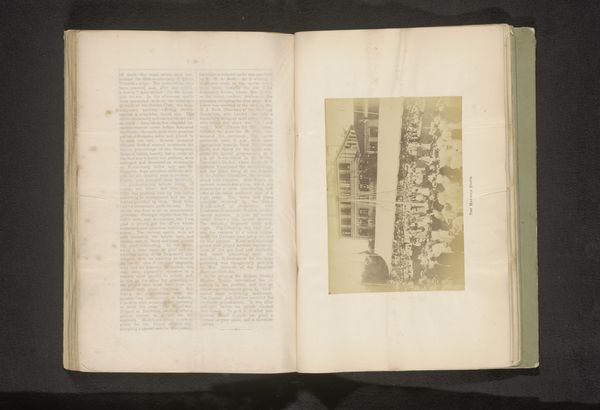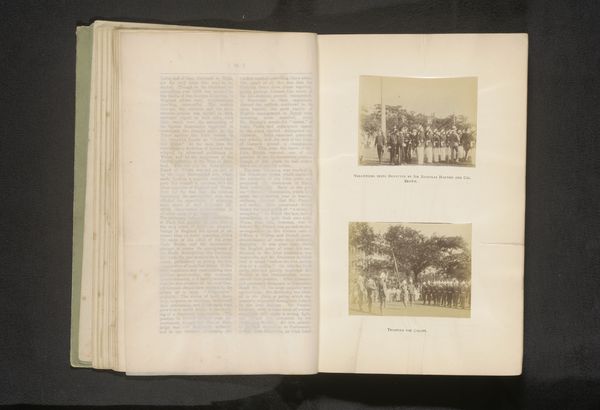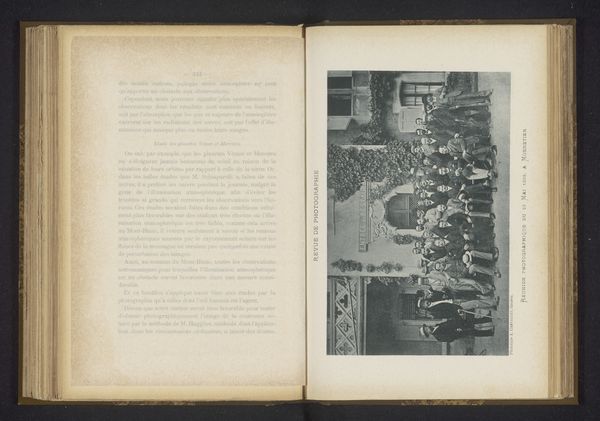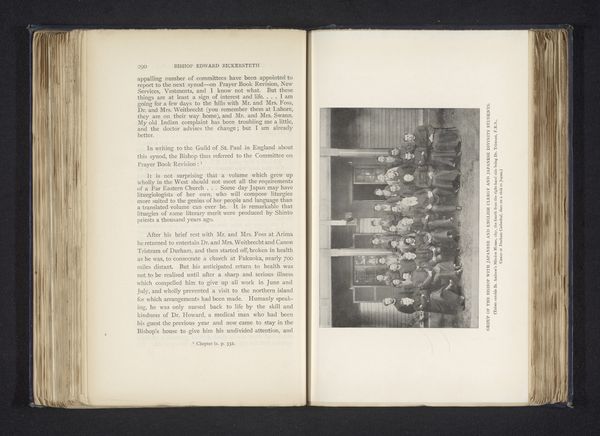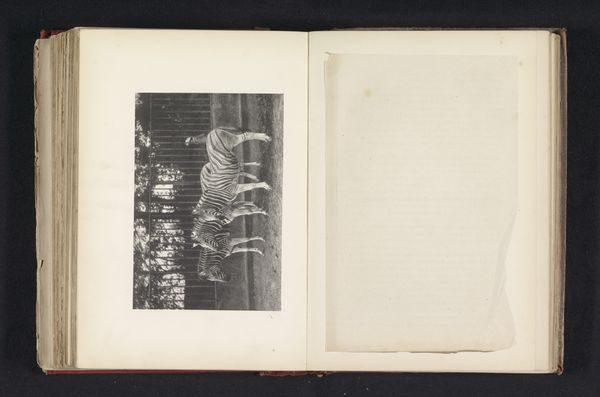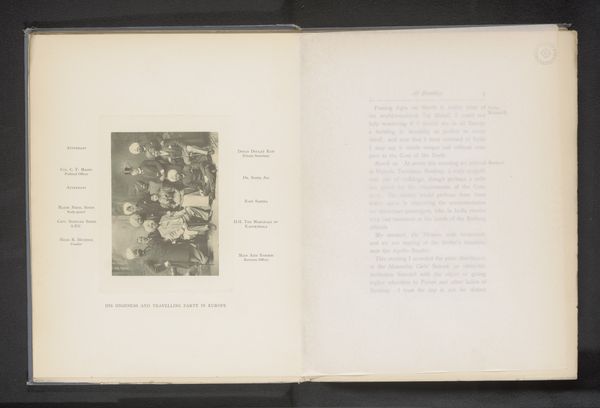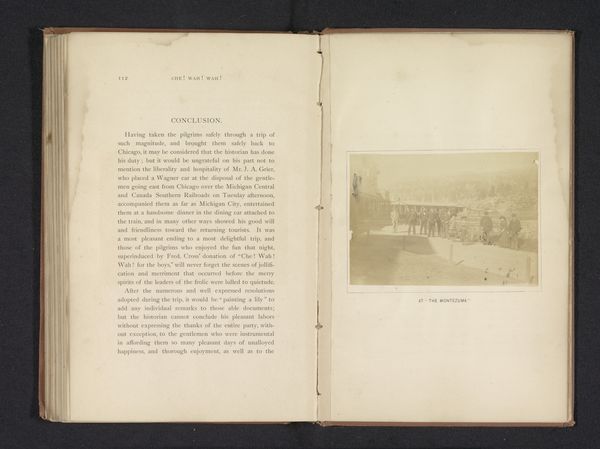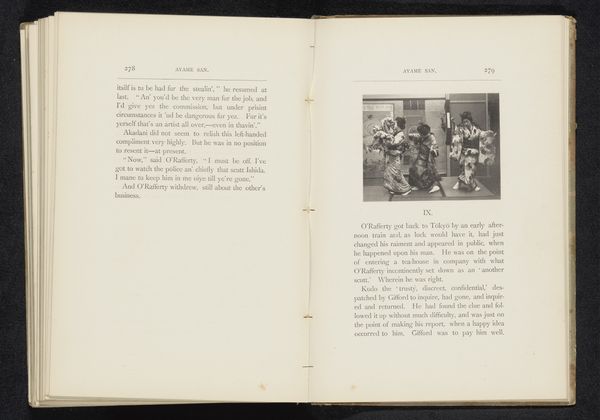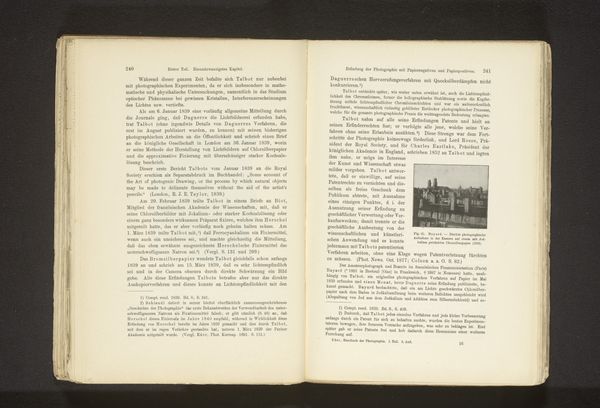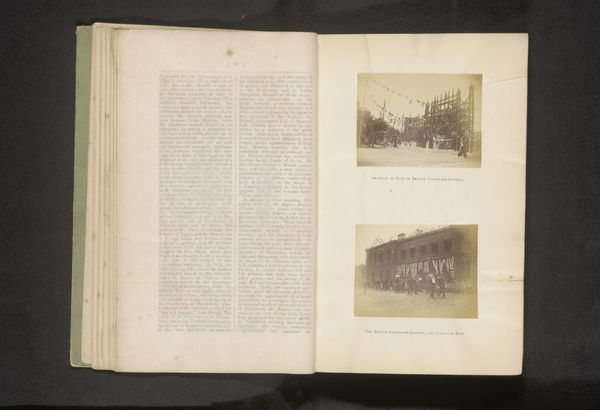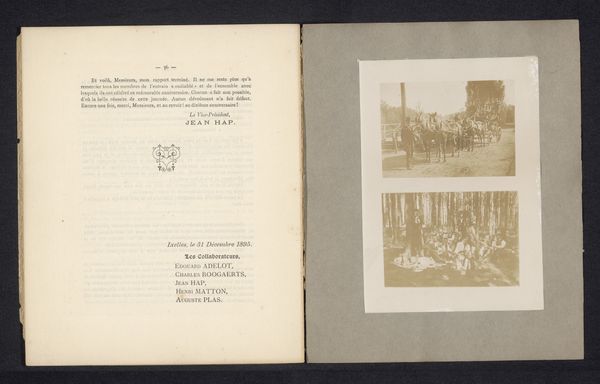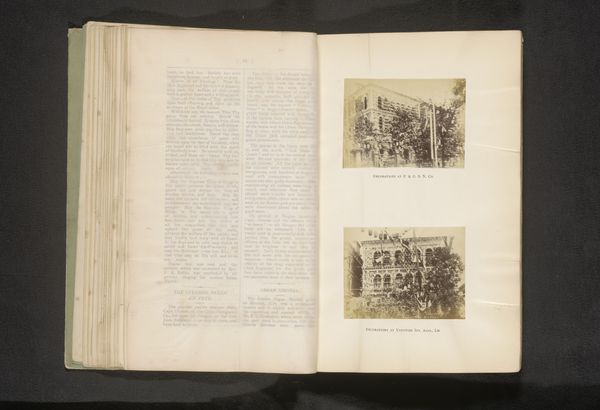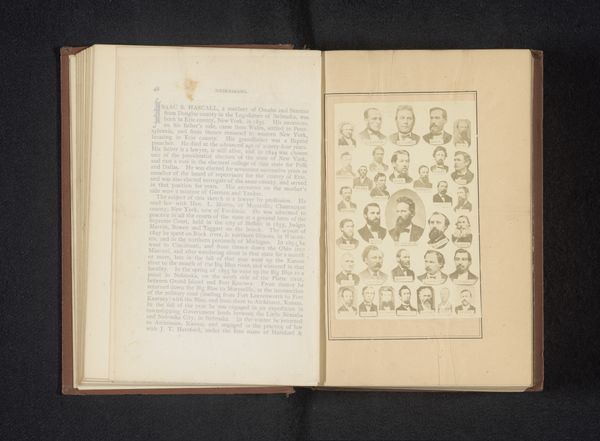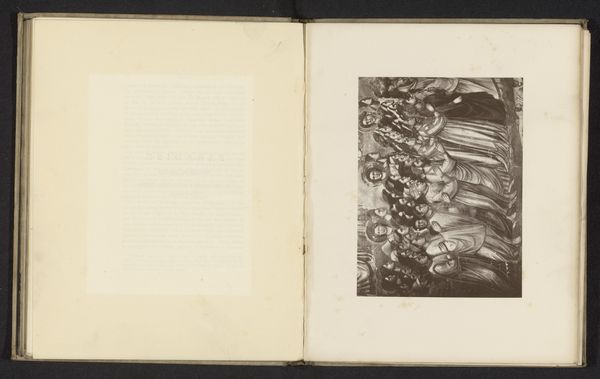
Gezicht op een fotostudio van vermoedelijk Erneste Mason Satow in Shanghai, de façade is versierd voor het diamanten jubileum van Victoria van het Verenigd Koninkrijk 1897
0:00
0:00
print, photography, albumen-print
#
portrait
# print
#
asian-art
#
photography
#
albumen-print
Dimensions: height 150 mm, width 107 mm
Copyright: Rijks Museum: Open Domain
Curator: This albumen print, dating to 1897, is titled "View of a photo studio presumably owned by Erneste Mason Satow in Shanghai, the facade is decorated for the Diamond Jubilee of Victoria of the United Kingdom". The photograph, by W.R. Kahler, captures a moment heavy with colonial implications. Editor: My initial impression is that the composition is quite busy; so many small figures and flags packed into the frame, giving it a sense of cramped yet vibrant energy. The limited tonal range of the albumen print lends a soft, almost dreamlike quality to the scene. Curator: Indeed. The Diamond Jubilee was a carefully orchestrated spectacle meant to solidify British power. Here, we see that spectacle reproduced in Shanghai. What is visually striking is how the colonizers imposed their traditions, a performative assertion of dominance, right onto the physical space of Shanghai. How do we interpret such imposition? Editor: The rigid lines of the building facade contrast with the waving flags; such order and imposition seem to speak to a constructed authority and the tension between colonizer and colonized. Notice also how the photographic texture itself lends the print an antique aura that, despite its inherent documentary character, paradoxically softens the colonial message and somewhat aestheticizes the scene for consumption. Curator: But even as that colonial message may be softened for our consumption, its impact remains sharp and precise for many, so understanding the positionality and power relations at play become even more necessary to ensure these histories are told respectfully. Looking closer, you begin to appreciate the diversity in dress, hinting at collaboration even within oppression, further blurring our ability to see things purely through binary lenses of colonizer/colonized. Editor: Ultimately, a careful study of the visual elements of the artwork allows an avenue into a rich tapestry of social and political meaning embedded within. It is in decoding that formal construction of power we truly are able to discuss issues and history as respectfully and comprehensively as we intend. Curator: Absolutely; recognizing the inherent power structures invites much deeper discussions of historical realities for many groups and cultures impacted during these turbulent and oppressive times. Editor: It seems our differing approaches provide unique but also complimentary ways of examining colonial-era dynamics within the history of photography.
Comments
No comments
Be the first to comment and join the conversation on the ultimate creative platform.
